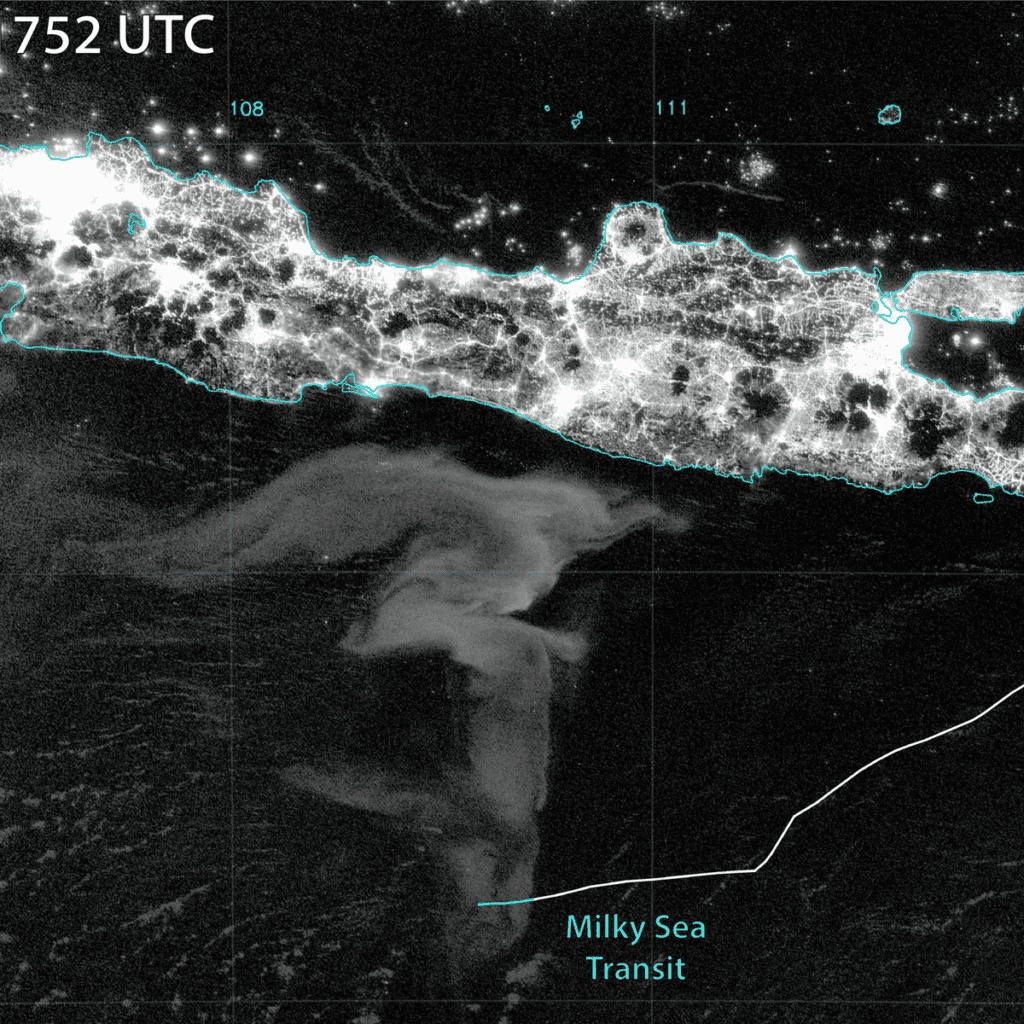The crew of the yacht Ganesha would often watch the sun go down and the sky go dark while sailing the East Indian Ocean. But one night in August 2019, things got very weird. A sailor looked out from the deck and saw the ocean turn milk-white.
“There’s no moon. It gives the impression of sailing on snow,” they wrote on the ship’s logbook. They had come across a rare phenomenon called the “milky sea”.

For centuries, sailors have been describing their encounters with “milky seas,” very rare occurrences when big areas of the ocean light up uniformly at night. A milky sea is even mentioned in the stories of Moby Dick, in which author Herman Melville describes a mariner sailing through a “shrouded phantom of the whitened waters.”
None of the crew members from the Ganesha yacht knew exactly what they were witnessing that night in 2019. They took a few photos to document the sight, despite the poor light conditions. Now, almost three years later, scientists have confirmed that what the crew saw wasn’t a visual illusion. In fact, it was bacteria, according to a new study.
Bioluminescent bacteria
The photos are the first-ever confirmed images of the phenomenon known as “milky seas,” a rare form of marine bioluminescence which gives the ocean surface the surreal appearance of daylit snowfield under dark skies. These events happen just once or twice a year, usually in the northwestern Indian Ocean and the Maritime Continent and researchers suspected it was a form of bioluminiscene.
But unlike bioluminescence produced by phytoplankton in disturbed waters, milky seas produce a steady glow — even in calm waters. Bacteria are the likely culprit behind this process, producing light to communicate with each other and trigger a glowing response. But milky seas haven’t been studied much due to their remote, elusive, and infrequent nature.
“I’d say there’s only a handful of people currently alive who have seen one. They’re just not very common—may be up to one or two per year globally—and they’re not typically close to shore, so you have to be in the right place at the right time,” Steven Miller, a professor of atmospheric science, and study author, told The Guardian.
In 2021, Miller identified a patch of light off the coast of Java, Indonesia, spanning over 100,000 square kilometers. He believed this was a milky sea event but couldn’t be sure without no on-the-ground reports. He published his hypothesis in a paper last year, hoping someone who had sailed in the area would eventually confirm his hunch.
And this was exactly what happened, as a crew member from the Ganesha got in touch. Miller interviewed the crew and compared the ship’s course to the coordinates of the satellite imagery. This allowed confirming that the light he had spotted in his observations from 2019 was the milky sea the crew had spotted in August that year.
Based on the interviews with the crew, Miller believes that the lighting phenomenon was probably caused by the bacteria Vibrio harveyi, which colonizes and eats algae. When there’s enough of these bacteria, they start to emit a soft glow. Even the ship’s toilet, which draws water from the ocean, was glowing, according to the interviews.
How these bacteria illuminated such large areas of the ocean still remains a mystery. However, now that scientists can find milky seas through satellite imagery, as demonstrated in this study, they can collect data to further research what triggers these events. Miller even hopes one day we’ll be able to predict where and when milky seas will happen next.
The study was published in the journal PNAS.


